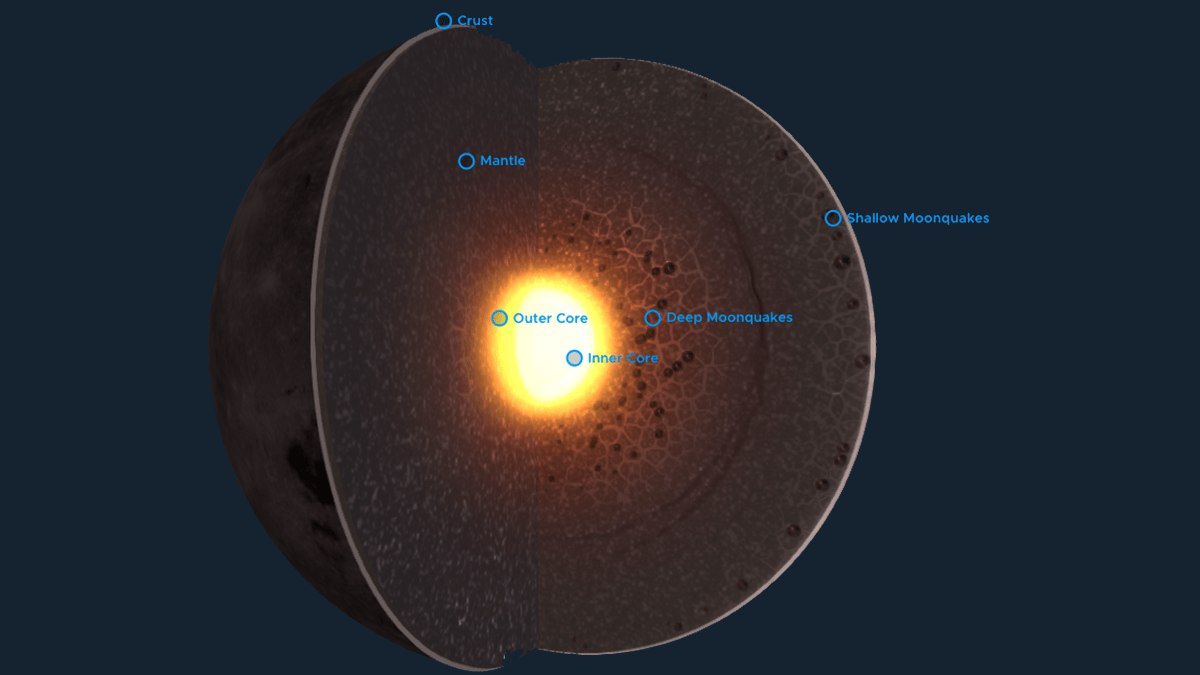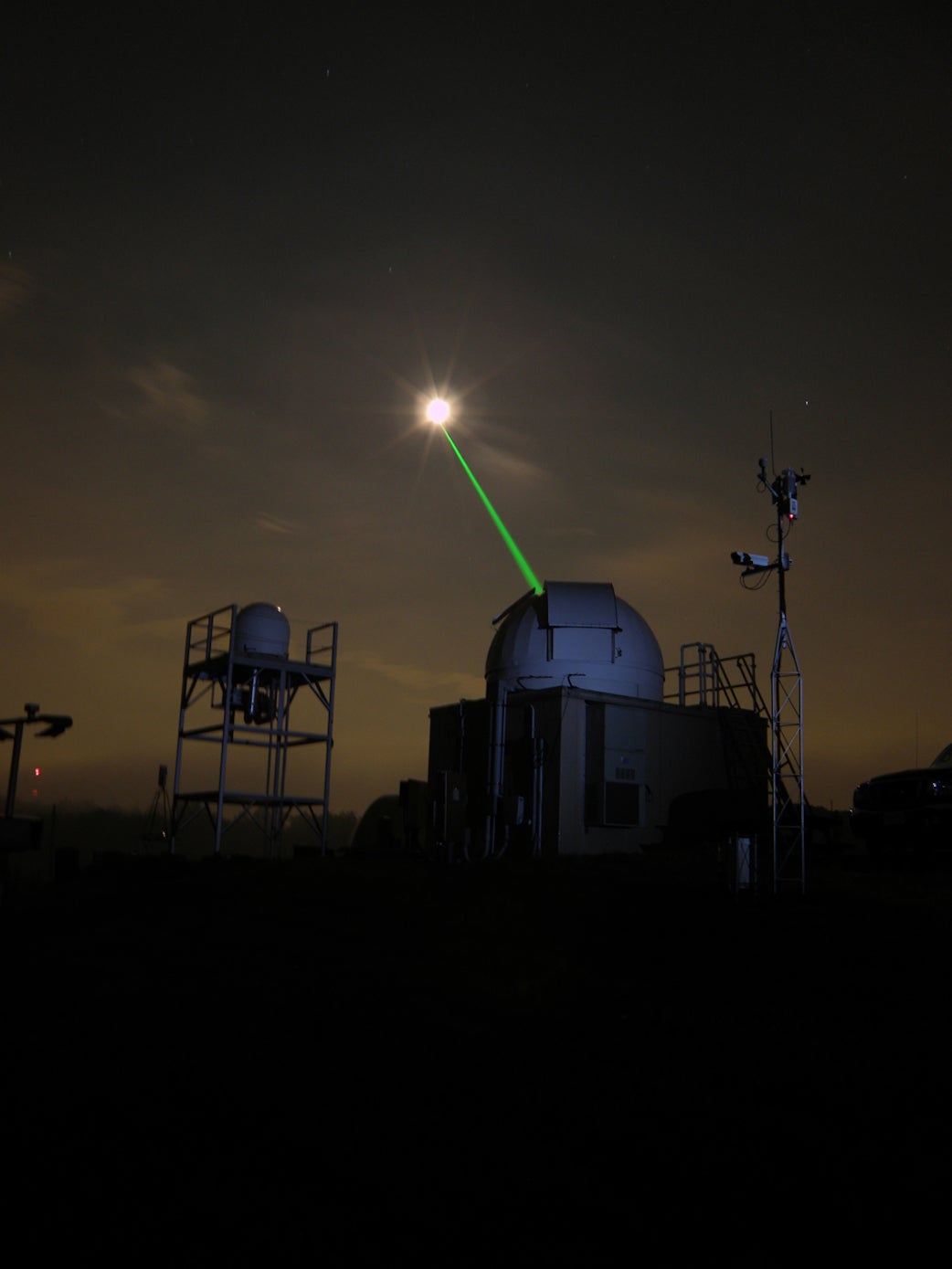
Between 1969 and 1972, astronauts from five Apollo missions placed seismometers on the lunar surface. In 2011, a group of NASA researchers led by Renee Weber used the resulting seismic data to get a picture of what lies at the Moon’s center. Their results inferred a solid inner core and a liquid outer core. The data also implied a partly molten layer surrounding the lunar core.
That snapshot of the Moon’s interior was somewhat blurry, thanks to seismic waves scattering through the lunar regolith, and the absence of instruments on the Moon’s far side.
Now a team of French astronomers has provided a definitive picture. Their results agree in part with the NASA researchers’ predictions – but also include some surprises.
Gathering measurements
Arthur Briaud and his colleagues at the French space agency CNES, the Côte d’Azur Observatory and the Paris Observatory re-analyzed the data set used by Renee Weber and her colleagues for their 2011 paper. They also included data from other sources, including the GRAIL lunar satellites and the Lunar Laser Ranging experiment (LLR). They published their findings May 3 in the journal Nature.
GRAIL (Gravity Recovery and Interior Laboratory) was a NASA mission to produce a high-quality map of the Moon’s gravitational field. The twin spacecraft entered very low lunar orbits on New Year’s Eve 2011 and New Year’s Day 2012. They functioned until December 2012. The spacecraft transmitted and received data between one another and Earth, measuring the changes in distance between the two spacecraft. This allowed them to measure changes in the Moon’s gravity field in great detail and peer into its interior structure.

Lunar Laser Ranging (LLR) measures the distances between Earth and points on the lunar surface. Scientists shoot lasers into space, and measure the round-trip time of the pulses reflected back to Earth by one of five retroreflectors placed on the Moon by several Apollo crews, or retroreflectors left on the uncrewed Soviet Lunokhod 1 and 2 landers.
Briaud and his colleagues used this data to create a sophisticated profile of the Moon’s characteristics. Next, they built simulations of various types of cores to see which most closely resembled the known observations. “The selected profiles,” the team wrote, “represent[ed] 0.12 percent of a total of 120,000 simulations” created – around 144 simulated snapshots of the Moon’s core.
The models that most closely fit what we already know about the Moon require a “low viscosity zone” deep in the lunar mantle. In this region, denser material flows towards the center and lighter material flows upward. This in turn best explains the presence of minerals like ilmenite (an iron-titanium oxide) in some formerly volcanic regions of the Moon’s surface. When most of the mantle “froze” into more or less solid rock, the migration of ilmenite to the surface ceased.
With its solid inner core and more fluid outer core, the Moon’s center is similar to Earth’s. “Only a Moon with a viscous outer core and a solid inner core” can accurately fit what we know about the geophysics and temperature gradients of the lunar interior, the team says in the research paper. The inner core has a density close to that of iron and is about 258 kilometers (160 miles) in radius. The outer core is 362 kilometers (225 miles) in radius.
The implications of these findings are important. The researchers’ model of the inner core fits with what we know about the evolution of the Moon’s magnetic field. Studies of lunar rocks show that between 4.25 and 3.56 billion years ago the Moon must have had a strong core dynamo driving a global magnetic field, similar to Earth. The lunar field then weakened over the next 400 million years to a strength not much greater than the field produced by a microwave oven.
Their results also favor a model called the “accretion tail hypothesis” over the classic Late Heavy Bombardment (LHB) for the source of iridium, platinum, gold, cobalt and nickel in the lunar mantle. The Moon (like Earth) was definitely pummeled by giant impacts about 3.9 billion years ago, but whether it was merely the normal end of planet formation (where leftover bits of planetary material were still flying about and smashing into things) or the long-theorized LHB (where some disruption in the outer planets sent a hailstorm of rocky and icy material sunward), is an open debate among scientists.
Briaud’s team says a LHB would have delivered ten times more of those metallic elements than are actually present. “This scenario is also consistent with the chronology of the outer planet orbital evolution,” they add, “as the accretion tail scenario does not require that the instability of the giant planets occurred a long time after the removal of the protoplanetary disk.”
Vishnu Viswanathan, a scientist who studies the Moon’s interior, remarked, “Knowing about the Moon’s interior has bigger implications” than just what’s at the center of the Moon. Indeed, they stretch far beyond our natural satellite in both space and time.









